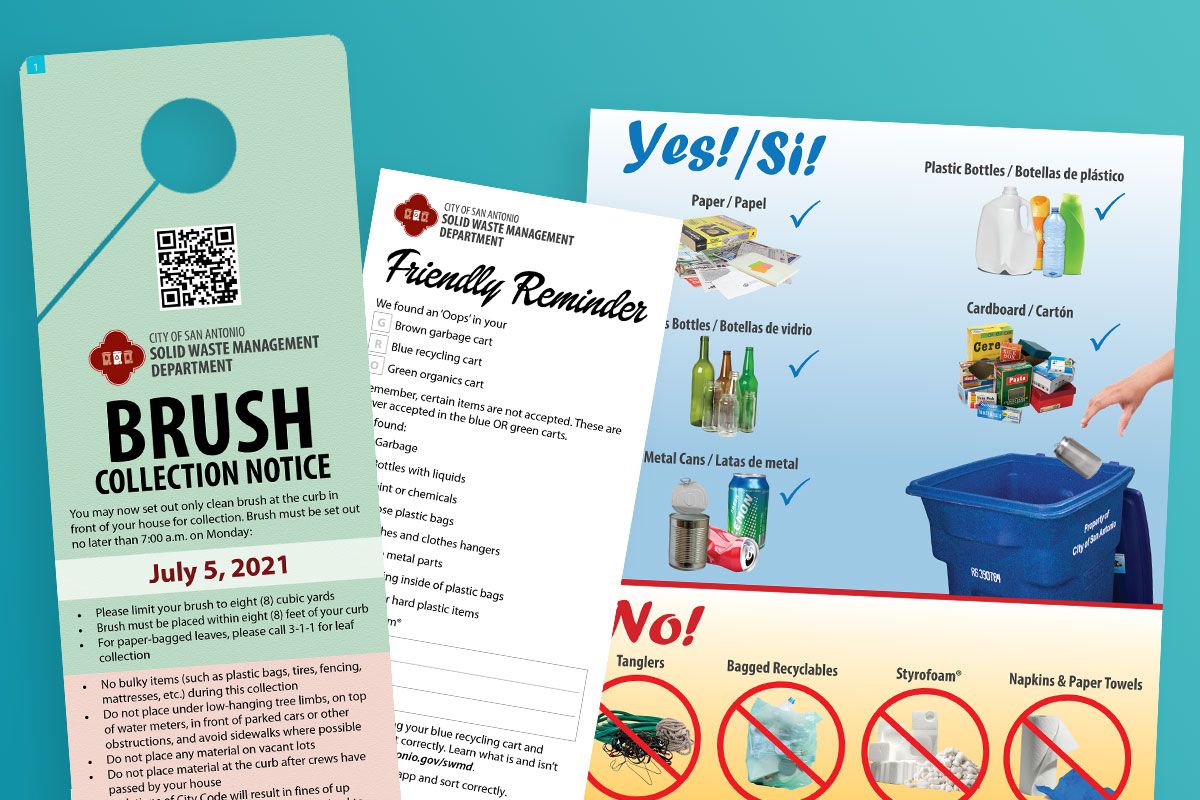Contamination
San Antonio’s recycling and organics programs are only successful when their guidelines are followed correctly. Placing unaccepted items in the blue and green carts is referred to as contamination.
Blue Cart Contamination
The City’s Solid Waste Department contracts with a recycling processing company that is privately owned. This materials recovery facility (MRF) accepts our material, processes it and then sells the commodities on the global recycling market. When the material is contaminated, they cannot sell it.
If the City’s recycling trucks drop off loads that are too contaminated by weight, the MRF charges the City a fine. Here is one astounding example. In 2018, the City was charged $1.5 million just for contamination by dirty diapers.
The DOs and DON'Ts of Recycling
The Problem with Styrofoam®
Recycling Tanglers
Green Cart Contamination
Organic materials also go to a privately run company that turns that material into nutrient-rich compost. Non-organic material such as plastic or metal will never break down and must be removed, which is an expense of resources. This company also sells their finished product.
Contamination of organic material is very dangerous. Glass, for example can shatter during the process causing serious personal injury. We like to say, “if a worm can’t eat it, it does not go in the green cart.”
Brown Cart Prohibited Items
Although not called contamination, there are many items that should never be placed in the trash cart. Some examples include batteries, paint and chemicals, fireworks, electronics, coals, ashes or embers, dead animals as well as prescriptions and biohazardous waste.
Diversion from the Landfill
The goal of these programs is to send less tonnage to the landfill where it will stay buried in perpetuity. Landfills create methane gas and can leak into the water table. One ton of material going to the landfill is also more expensive than recycling one ton.
Keep San Antonio sustainable. Do not contaminate your carts.
Tags, Door Hangers & Flyers
We communicate directly with individual customers in a variety of ways. Here are the methods we use and what the messages mean.
